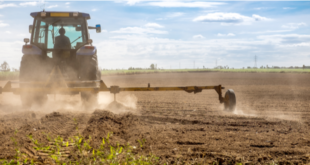The Bureau of Reclamation recently released its Colorado River Basin August 2019 24-Month Study, which sets the annual operations for Lake Mead and Lake Powell in 2020. Based on projections in the 24-Month Study, Lake Mead will operate in the Normal or ICS Surplus Condition in Calendar Year 2020 and Lake Powell will operate in the Upper Elevation Balancing Tier in Water Year 2020 (October 1, 2019 through September 30, 2020).
The Upper Basin experienced above average snowpack, and runoff was 145% of average this past spring, raising Lake Powell’s elevation by more than 50 feet since early April. Total Colorado River system storage today is 55% of capacity, up from 49% at this time last year. In addition, critical drought contingency plans adopted by the seven Basin States, federal government and Mexico earlier this year are now in place to reduce risks to the system.
“While we appreciate this year’s above average snowpack, one good year doesn’t mean the drought is over. We must remain vigilant,” said Commissioner Brenda Burman. “I applaud everyone who came together this year to get the drought contingency plans done. The additional actions under the contingency plans will help ensure the reliability of the Colorado River system for the 40 million people dependent upon it.”
Jeffrey Kightlinger, general manager of the Metropolitan Water District of Southern California, commented on the report, “We’re certainly grateful that nature provided some relief to the critical conditions in the Colorado River Basin. But the Southwest wouldn’t be in this encouraging position without also the successful collaboration of the Colorado River Basin states to develop the Drought Contingency Plan. The DCP wasn’t just about sharing the pain of potential water cutbacks; one of its primary benefits was to incentivize storage in Lake Mead. It creates new storage opportunities for California, Arizona and Nevada and increases the flexibility to access stored water.
The August 2019 24-Month Study projects Lake Mead’s January 1, 2020, elevation to be 1,089.4 feet, about 14 feet above the Lower Basin shortage determination trigger of 1,075 feet. Lake Powell’s January 1, 2020, elevation is projected to be 3,618.6 feet — 81 feet below full. Because Lake Mead is projected to begin the year below the drought contingency plans threshold of 1,090 feet, Arizona, Nevada and Mexico will make water savings contributions to Lake Mead in 2020.
Kightlinger continued, “Today is evidence the DCP is working as we hoped. By the end of the year, the Lower Basin states and Mexico together anticipate storing an additional 700,000 acre-feet of conserved water in Lake Mead in 2019 – a record amount that will boost the lake’s elevation by nearly 9 feet. Metropolitan alone will store 400,000 acre-feet this year, bringing our total stored in the lake to nearly 1 million acre-feet, another record.
The August 2019 24-Month Study can be found at https://www.usbr.gov/lc/region/g4000/24mo.pdf.
 California Water News Daily Your Source For Water News in California
California Water News Daily Your Source For Water News in California


